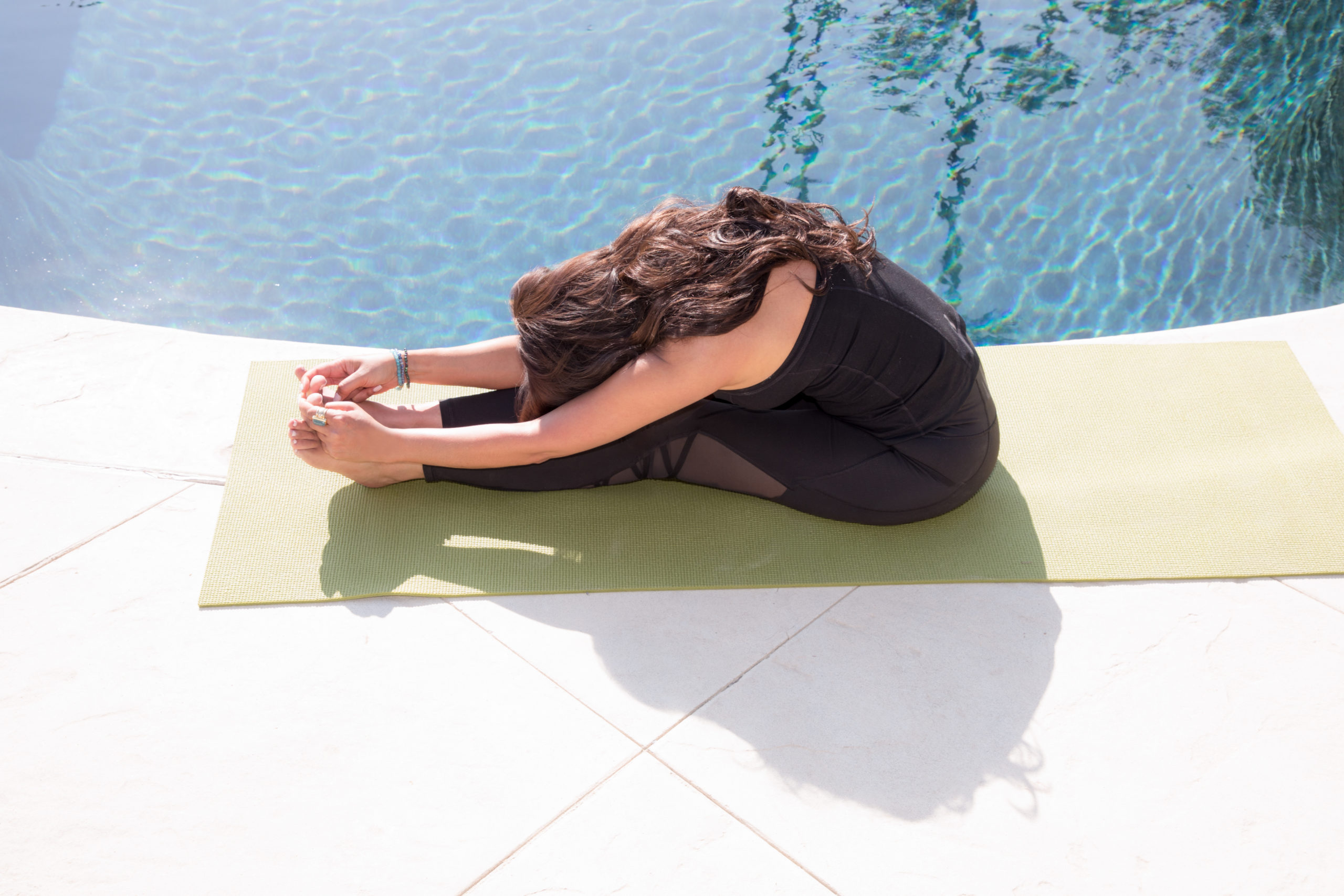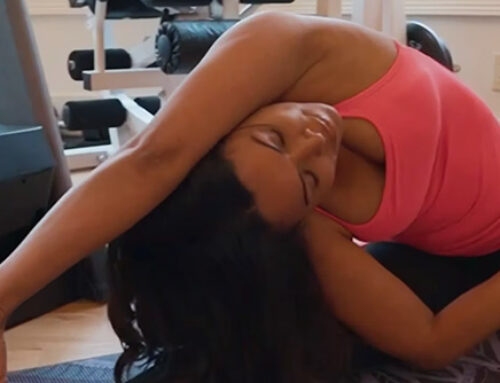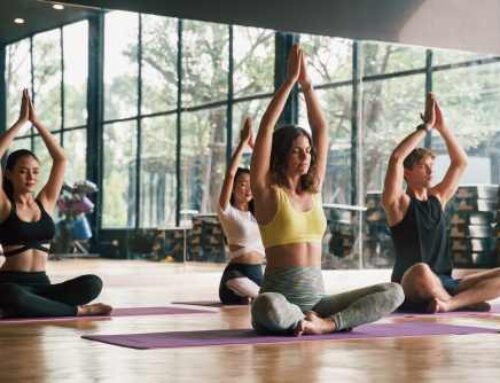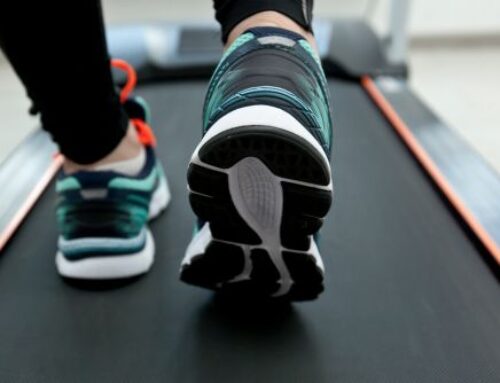Seated Forward Bend or Paschimottanasana is a calming pose due to its abdominal bend that emphasizes a productive stretch in your shortened hamstrings. They’re liable to be so tight on people who sit too much at their desk jobs since sitting shortens them into an unnecessary loading position, pulling at your hip flexors too. Seated Forward Bend can undo some of this tension.
Stress is a common result of out-of-control tension in your spine, hamstrings, and shoulders. Therefore, this releasing stretch can improve your mood as well. Seated Forward Bend has to be eased into but as you practice it, you can find length and energy in your abdominal organs, spine, and hamstrings. Read on to learn the therapeutic benefits of regularly performing Paschimottanasana as well as how to do the pose properly.
Benefits of Seated Forward Bend
The most immediate and obvious benefit of performing Seated Forward Bend is an even stretch throughout your entire back. This can help you relieve symptoms of sciatica and manage its symptoms. Stretching your hamstrings benefits your pelvic stability as well as balances the surrounding muscles.
The best way to relieve constipation through yoga is to stretch and massage your vital and digestive organs. Seated Forward Bend allows you to relieve digestive problems by encouraging this massage. This also energizes your nervous system, allowing you to naturally relieve migraines without the negative side effects of medication. Increasing circulation to your mind helps calm it, which encourages a healthy mood. It can even help you get to sleep.
Those suffering from high blood pressure or menstrual discomfort, as well as issues related to fatigue and appetite loss, can use this traditional seated pose to relax.
How to Do the Pose
Seated Forward Bend begins in a seated position (of course!). I like to sit on the edge of a soft, folded blanket to make myself more comfortable. Stretch your legs in front of you. Feel the floor press into your heels as you turn onto your left thigh, lifting your right side with your hand, rocking back, and doing the same on the other side. We’re just looking to feel grounded at this point, feeling how the floor supports our buttocks as we turn in our thighs and feel the floor beneath.
Place your weight on your palms and fingers, hands even with your hips on the floor. As you push, lift your sternum up as you draw in your groin, making sure to keep your abdomen as long as possible. Inhale and bend forward towards your legs as one solid unit of head and torso, careful not to lean with your hip but with your entire waist. You should feel your tailbone become long and lift as you lean forward.
Many of us won’t be able to grab our feet as we just begin Seated Forward Bend. If you can, hold the sides of your feet while keeping your elbows straight. If not, maintain your healthy bend using a strap to connect to your feet and get the right stretch.
Either way, don’t push this movement! This bend can become unproductive if you force it. To make sure it works for you correctly, keep your head high as you bend and make sure you stay long in your abdomen. Keep your arms as long as possible too as you fold over (as far as you comfortably can).
As you breathe in, make your torso longer and try to inch forward a little more. As you work on this pose, you’ll be able to lift your torso more and reach your arms past your feet.
Stay here for up to a minute or two. When you’re ready, lift your whole torso and keep your arms straight. As you inhale, let your tailbone back down.
The Takeaway
Seated Forward Bend provides an amazing stretch in your hamstrings and spine, which helps you calm down. This is a wonderful stretch for those that suffer from insomnia, menstrual discomfort, fatigue, and anxiety. Like many calming seated poses, Paschimottanasana provides a wonderful stretch that you may have to work up to, but which can provide relief for people with high blood pressure and indigestion at the same time you treat your tight, dysfunctional hamstrings to a welcoming stretch.





Leave A Comment